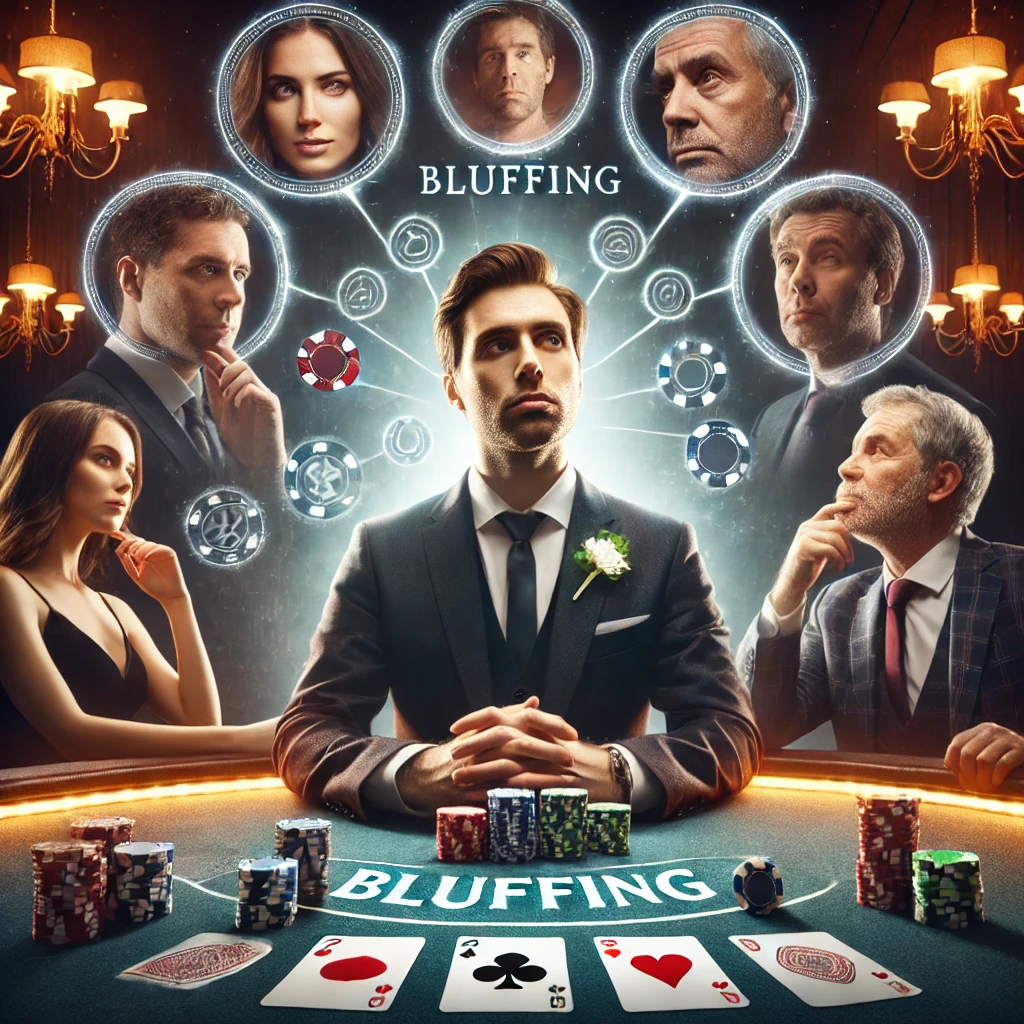Poker is characterized by a deceitful move known as bluff which can change the course of a game. Whether you are new or experienced in poker, being able to bluff well enhances your strategy greatly. This post will discuss in detail about bluffing, different strategies, psychological factors, and professional advice to help you become an improved player.
What is Bluffing in Poker?
Bluffing is a technique used in poker to make people believe that you have better cards than you actually do. It is a critical part of poker strategy that if done correctly can lead to significant profits. It entails reading your opponents, contextualising the game and making deliberate moves that confuse others
Different Kinds of Bluffs
- Pure Bluff: A weak hand bet or raise designed to get stronger hands from rivals folded.
- Semi-Bluff: Betting or raising with a drawing hand that might improve during subsequent rounds.
- Stone-Cold Bluff: A risky bluff with almost no chance of winning if called
- Continuation Bluff: Regardless of what kind of hand one holds, it involves betting on the flop after being the preflop aggressor.

150% deposit match bonus – $2000!
Try itFirst deposit bonus of 100% up to $600
Try it1000€ deposit welcome bonus
Try itWhen to Bluff in Poker
- Position: When bluffing from late position it tends to be more effective as one has more details concerning the activities of their opponents.
- Opponent Types: Find out about tight players who are more inclined to fold, versus loose ones who can call.
- Table Image: If you have been playing conservatively, a sudden bluff will be more believable.
- Game Dynamics: Observe the general picture of the game; frequent bluffs might not work in a loose game.
Psychological Aspects of Bluffing
Bluffing is not about cards alone but also about narratives told by it. Successful bluffing includes:
- Reading Opponents: Watch betting patterns, body language and reactions.
- Emotional Control: Keep your emotions in check to avoid having tells.
- Confidence: Show confidence in your actions if you want your bluff to seem true.

Expert Tips for Bluffing
- Know Your Opponents: Learn their habits and tendencies so that you may know when it’s best to bluff.
- Vary Your Bluffing Strategy: Make sure that your approach is not too predictable every now and then mix some genuine strong hands with bluffs.
- Use Pot Size to Your Advantage: Instead of just bluffing away without any thought at all, only do so in small pots where there is less risk involved.
- Timing is Key: Like when opponents show weakness.
Common Bluffing Mistakes
- Bluffing Too Often: Bluffing Too Often Sometimes over-bluffing can lead to predictability which results in losing many chips in these games.
- Bluffing Against Calling Stations: Stay away from attempting bluffs on calling station type of players
- Ignoring Table Dynamics: This means using a strategy that does not fit within the context of the current game mentioned above.

Advanced Bluffing Techniques
- Double Barrel Bluff: After making a continuation bet on the flop, fire a second bet on the turn.
- Reverse Tell Bluff: Feign weakness so as to bait an opponent into betting, then raise them back.
- Bluffing on Scare Cards: At this point, if there is a board pair or connection that could fit straight or flush draws, it becomes scare card betting time.
Conclusion
To become good at bluffing in poker you have to practice well, be observant and apply strategies. By learning about different kinds of bluffs, knowing when to do it right and avoiding common mistakes will go a long way in enhancing your poker playing skills. It’s important to remember that bluffing is more than just being dishonest; it also involves establishing plausible grounds which would cause other players to act irrationally against their very best interests based upon what information they think you might have or want them to believe.
F.A.Q
Q1: How often should I bluff in poker?
The frequency with which one should attempt bluffs depends on several factors including but not limited to type of game being played and characteristics of opponents. In general though, it may be effective without causing predictability by bluffing around twenty five percent of time frame considered optimal by some pros.
Q2: Can bluffing work in online poker?
Yes but there are certain ways in which, focusing more on betting patterns and less on physical tells.
Q3: What are some tells that indicate a player is bluffing?
Common tells include inconsistent betting patterns, sudden changes in behavior, and overly confident or nervous actions.
Q4: Should beginners attempt bluffing?
Beginners should focus on learning the basics of poker first. Bluffing can be attempted as they gain more experience and understanding of the game.
Q5: How can I improve my bluffing skills?
Practice, observe experienced players, and learn from your own games. Reviewing hand histories and discussing strategies with other players can also help.
By following these insights and continuously improving your skills, you can become a better poker player, adept at the subtle art of bluffing.
